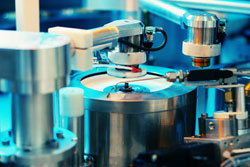Distributed control systems in industrial automation
Control technologies play a key role in modern production systems, ensuring high productivity levels. Nevertheless, the individuality of products is constantly increasing and with state-of-the-art controllers it is almost impossible to fulfil these demands. To help overcome current controllers' lack of flexibility, the OCEAN project sought to develop a real-time capable communication platform for distributed control applications. The 'Distributed control system real-time framework' (DCRF) was designed to enable dynamic integration of numerical control components in distributed open platforms. More specifically, a flexible and application-specific configuration of control systems was the ultimate aim of the OCEAN project. For this purpose, a modular-based philosophy was opted for, which evolved from the basic concepts of the OSACA (Open System Architecture for Controls within Automation Systems) standard. The main task of the real-time capable communication platform DCRF is to support the efficient exchange of data between control components. Therefore, for the realisation of the DCRF platform besides a real-time operating system an appropriate communication middleware was necessary as the implementation base. TAO was found to be the most suitable CORBA object request broker and RTAI the preferred Linux real-time extension. The 'Common object request broker architecture' (CORBA) allows software objects to communicate with each other, even when running different processes on different hardware platforms. On the other hand, RTAI supports real-time processes running simultaneously in kernel and user space and importantly, the use of various standard operating systems functionalities in real-time applications. One further aim of the DCRF developers was to have numerical control components from different vendors interoperating within the same communication framework. Hardware abstractions were investigated and evaluated so that an exchange of components will be feasible and easy. Moreover, suitable transport mechanisms were added, as it is mandatory for real-time components that their communication channels meet their time constraints. Based on publicly available open and vendor-independent source software, the DCRF communication platform is also offered as open source software. For more information about the CDRF communication platform, please visit the OCEAN project website: http://ocean.itia.cnr.it/(opens in new window)







